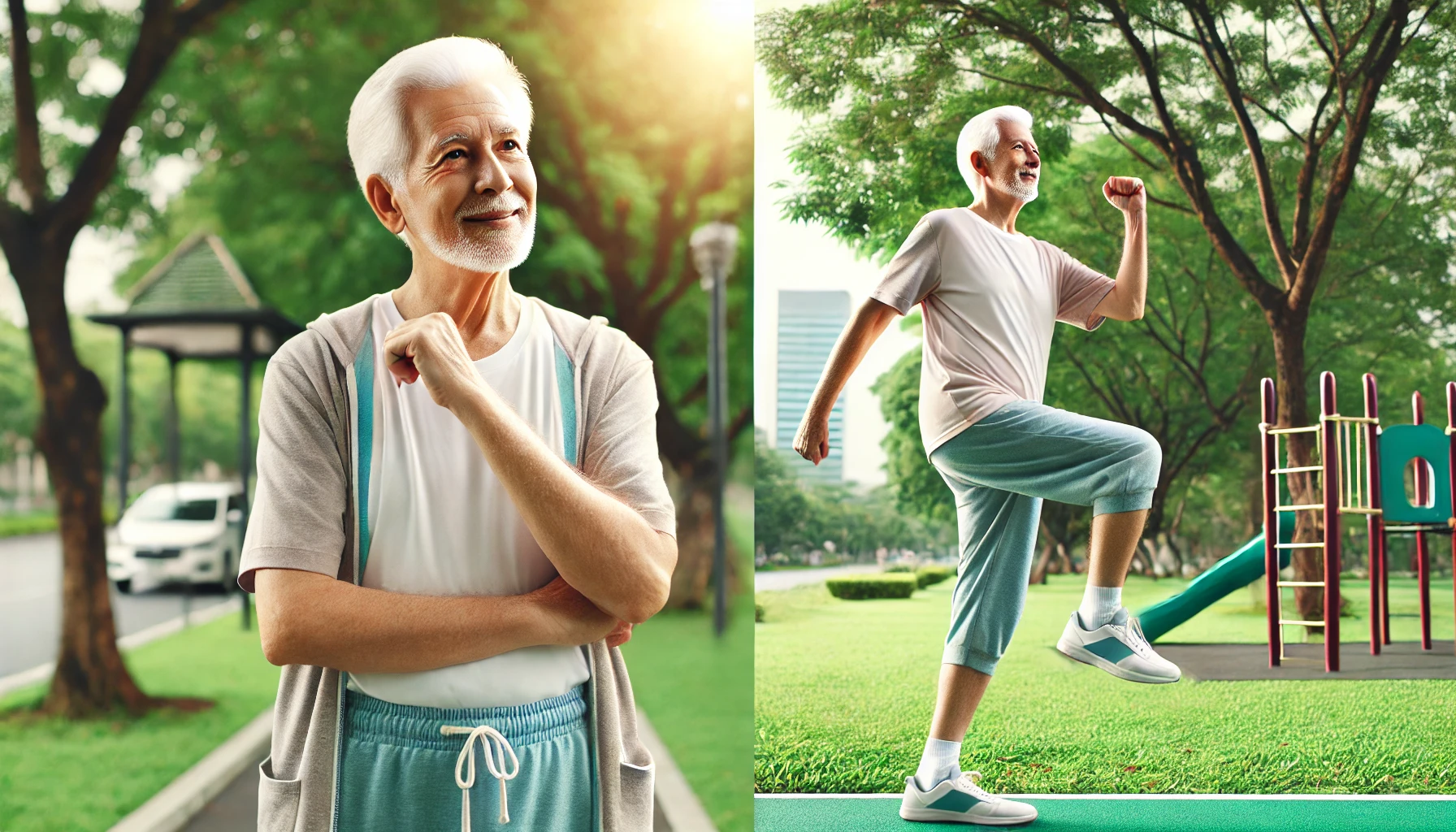Regular physical activity is essential for the health of elderly people, especially those with chronic diseases. Aging brings various physiological changes, such as a decrease in muscle mass and joint mobility. However, staying physically active can help alleviate many of these changes and improve the overall quality of life for elderly individuals, as well as assist in managing chronic conditions like hypertension, diabetes, and arthritis.
Benefits of Physical Activity for Elderly Individuals
For elderly individuals, the benefits of physical activity extend beyond physical health. Regular exercise also has a significant impact on mental and emotional well-being.
Improvement of Cardiovascular Health
Aging is associated with an increased risk of heart disease. The good news is that physical activity can significantly improve cardiovascular health in elderly individuals.
- Reduction in Blood Pressure: Aerobic exercises like walking and swimming help lower blood pressure.
- Heart Strengthening: Regular exercise strengthens the heart muscle, improving its efficiency.
- Improved Circulation: Consistent physical activity improves circulation and oxygen supply to the body.
With these benefits, elderly individuals can reduce the risk of heart disease and even improve their heart function.
Diabetes Management
Type 2 diabetes is a common condition among the elderly. Regular physical activity is one of the best ways to manage this condition.
- Improved Insulin Sensitivity: Physical exercise enhances the body’s response to insulin, helping to control blood sugar levels.
- Weight Management: Physical activity aids in weight loss and maintenance, a key factor in controlling diabetes.
- Reduction of Complications: Regular physical activity can also prevent serious complications of diabetes, such as nerve and eye problems.
A combination of aerobic exercises and resistance training is key to maintaining blood sugar control and overall health.
Pain Relief and Improved Mobility with Arthritis
Arthritis and other musculoskeletal conditions affect many elderly individuals, causing pain and stiffness in the joints. Physical activity can help relieve these symptoms.
- Joint Inflammation Reduction: Low-impact exercises, such as swimming and walking, help reduce inflammation and alleviate pain.
- Muscle Strengthening: Exercises that strengthen muscles around the joints provide additional support and reduce joint wear.
- Improved Flexibility: Stretching and flexibility exercises improve range of motion and reduce stiffness.
By strengthening muscles and increasing flexibility, elderly individuals can improve their mobility and perform daily activities with more ease.
Fall Prevention: Balance Improvement
Falls are a constant concern for elderly individuals, as they can lead to serious injuries. Fortunately, physical exercise can improve balance and reduce the risk of falls.
- Balance Exercises: Activities like tai chi, yoga, and stability exercises are essential for improving balance.
- Core Strengthening: Strengthening abdominal and back muscles provides better posture and stability.
- Increased Confidence: With improved balance, elderly individuals feel more secure in performing daily activities, which can lead to greater independence.
Recommended Types of Exercise for Elderly Individuals with Chronic Diseases
While any form of exercise is beneficial, certain types of physical activity are more suitable for elderly individuals with chronic diseases.
Aerobic Exercises
Aerobic exercises are crucial for improving cardiovascular health and overall endurance.
- Walking: Walking is simple and effective, improving cardiovascular health and muscle strength.
- Swimming: A low-impact exercise that works the entire body. Swimming is gentle on the joints and enhances flexibility.
- Cycling: Riding a stationary bike or an outdoor bicycle improves leg strength and cardiovascular health.
These exercises can be performed in 30-minute sessions, at least 5 days a week.
Strength Training
Strength training is essential for preventing muscle loss, which naturally occurs with age. Strengthening muscles also helps improve mobility and stability.
- Bodyweight Exercises: Squats, push-ups, and sit-ups are effective for strengthening muscles without the need for equipment.
- Resistance Bands: These are an excellent way to increase muscle strength without putting excessive strain on the joints.
- Light Weights: Lifting light weights helps maintain bone density and muscle strength.
It is recommended that elderly individuals perform strength training two to three times a week.
Stretching and Flexibility Exercises
Stretching is vital for improving flexibility and joint mobility, preventing stiffness.
- Yoga: Yoga combines stretching, strengthening, and balance exercises. Many poses can be adapted for elderly individuals.
- Pilates: Pilates focuses on core strengthening and flexibility, making it great for improving posture and alleviating back pain.
- Simple Stretching: Doing simple stretches daily improves flexibility and reduces muscle tension.
Balance and Coordination Exercises
Exercises that challenge balance help prevent falls and improve overall stability.
- Tai Chi: This gentle martial art improves balance, flexibility, and coordination.
- Stability Exercises: Standing on one leg and practicing balance on unstable surfaces help strengthen leg muscles.
- Heel-to-Toe Walking: Walking with one foot in front of the other improves coordination and stability.
These exercises should be done at least three times a week.
Safety Tips for Exercising
Physical activity should be done with caution, especially for elderly individuals with chronic diseases.
Start Slowly
It is important to begin with low-intensity exercises and gradually increase duration and intensity over time to avoid injuries.
Consult a Healthcare Provider
Before starting any exercise program, it is essential to consult a doctor to ensure the chosen activities are safe.
Stay Hydrated
Drinking water before, during, and after exercise is crucial for preventing dehydration and improving performance.
The Importance of Physical Activity for Elderly Health
Regular physical activity is one of the key pillars of healthy aging. Aerobic, strength, flexibility, and balance exercises not only help control chronic diseases but also improve quality of life by increasing mobility, strength, and overall well-being.
By incorporating exercise into their daily routines, elderly individuals can improve cardiovascular health, control diabetes, alleviate arthritis pain, and, most importantly, reduce the risk of falls. This allows them to maintain independence and live with more health and quality of life.
